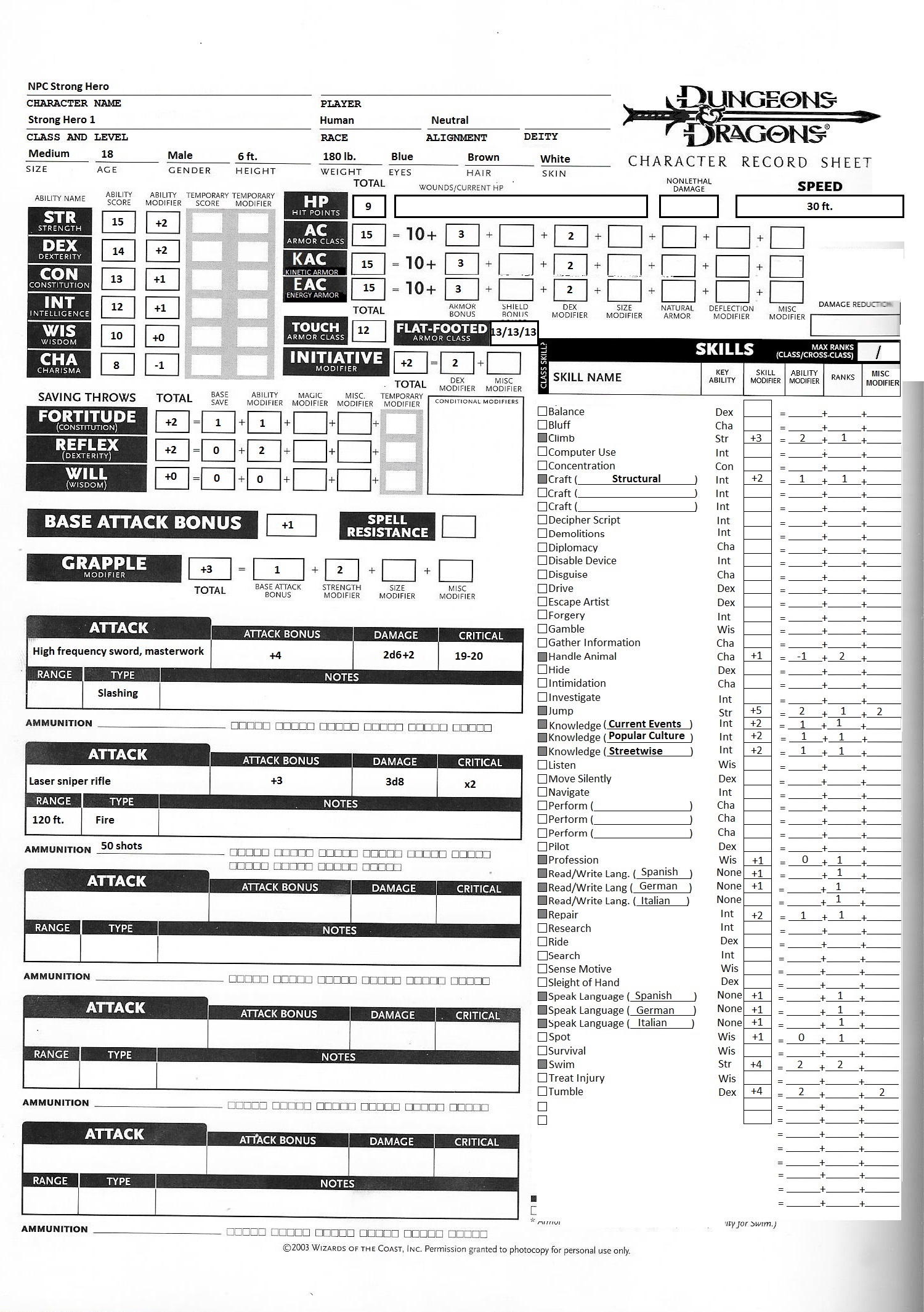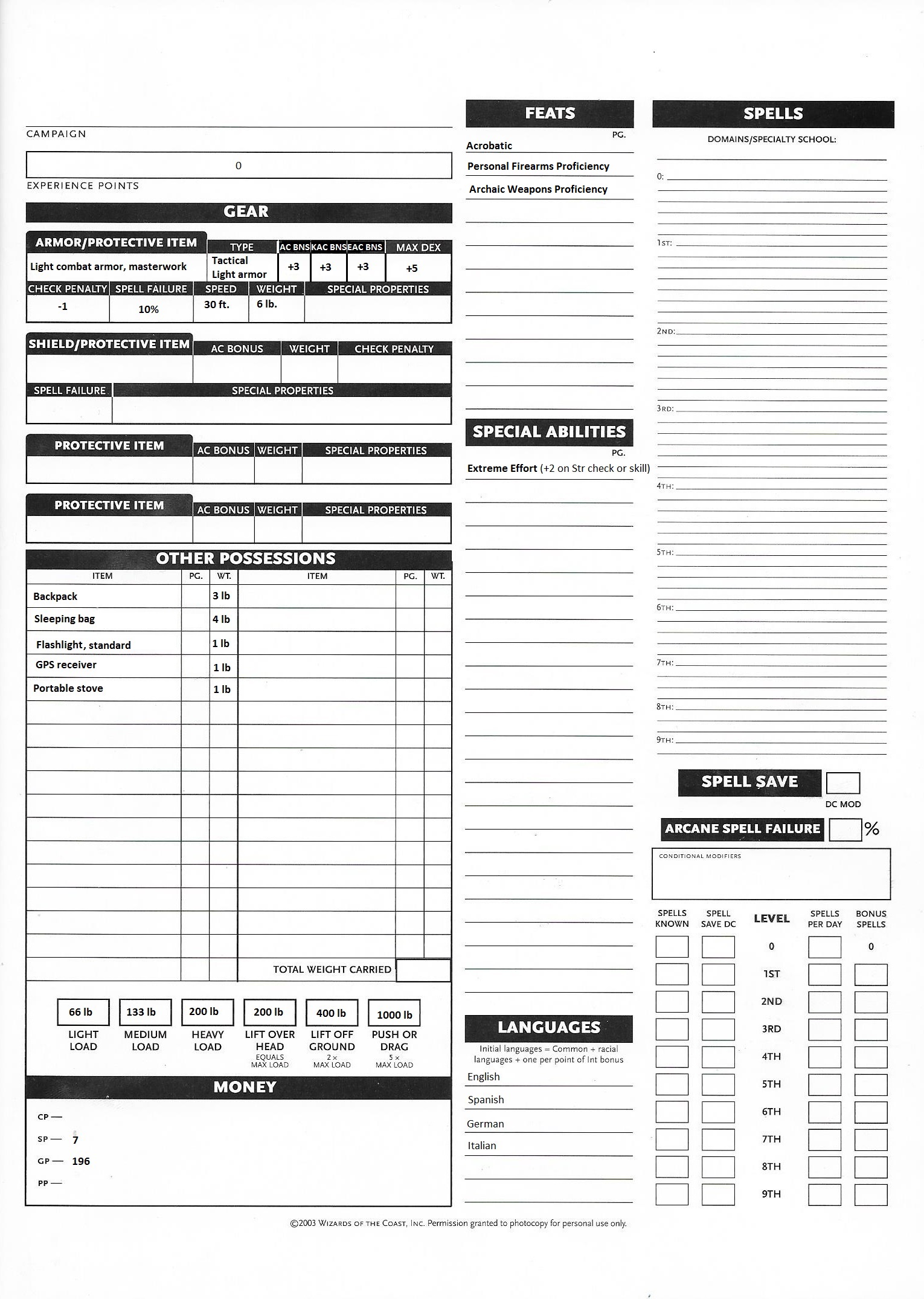The main diffence between my Homebrew D20 Modern and the books is that I use three Armor Classes AC, KAC, and EAC which stand for Armor Class Kinetic, Armor Class, and Energy Armor Class respectively. I use the 3.5 Editon of D&D for Armor Class, as their is no 5th edition D20 Modern, Armor Class is what muscle-powered weapons roll to achieve or exceed in order to hit, Kinetic Armor Class is used for all projectile weapons that fire bullets out of a gun, and Energy Armor Class is what rayguns use when targeting the opponent. Each Armor has three armor ratings, usually the highest armor rating is for regular Armor Class (AC), the next highest one is for Kinetic Armor Class (KAC) and the lowest one is the Energy Armor Class (EAC). This is why it is advantageous to use a raygun over a rifle firing a bullet, and why a rifle firing a bullet has an advantage over a bow and arrow. Certain armor types are designed to deflect or absorb the impact of bullets, while others are designed to reflect the beam of a raygun. Here are my revised armor tables, taken from the D&D 3.5 Players Handbook, the D20 Modern Core rulebook and the D20 Future Handbook respectively.

I should also mention here that the currency on Venus, are the standard D&D 3.5 coins, as most items come from the D&D equipment lists, off-worlders (visitors from Earth) bring their own equipment, but they also use the standard copper, silver, gold and platinum pieces that the natives of Venus use. There are a few modern settlements on Venus, these are the American Base, the European Union Base, the Chinese Base, and the Russian Base, each is a town of around 10,000 settlers, they use modern machinery and a combination of hire local laborers to do grunt work, and make use of draft animals, as equipment imported from Earth tends to be expensive, so the emphasis is to use local resources and labor whenever possible. Each settlement has a host country on Venus, which in exchange for trade with Earth, has agreed to allow these extraterritorial settlements of Earthlings within their national borders.














